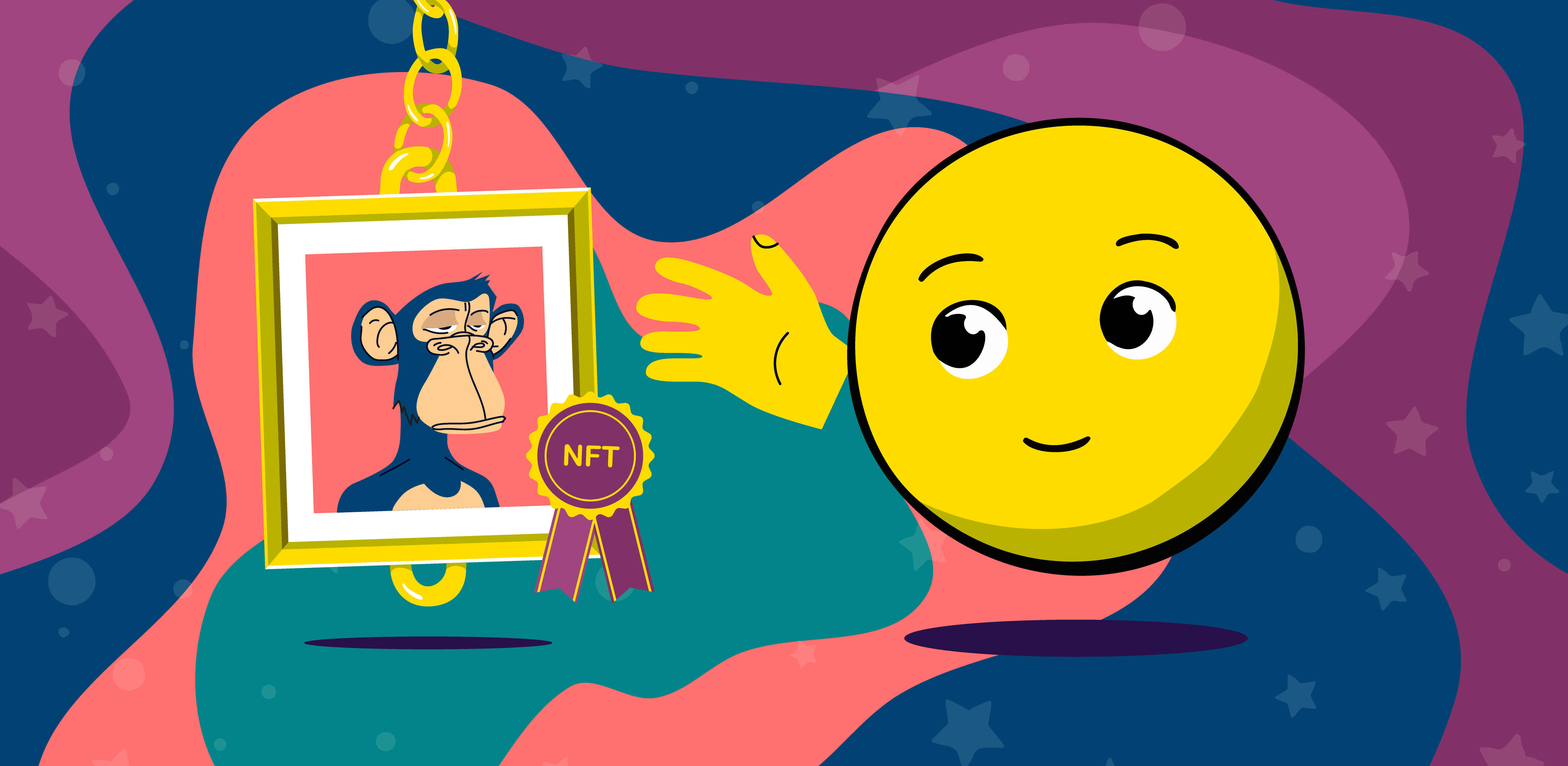
The NFT craze
Just like in many other trends, a significant amount of celebrities and billionaires have jumped on the boat that’s taken NFT to the mainstream, driving overall sales by over 55% with respect to last year. This might be the new crypto gold rush, as it turns out to be an asset that can be created by anyone regardless of their community or income level. But, what exactly is an NFT, and why should you care about it? Let’s talk about fungibility first.
If I have $10 in quarter-dollar coins in my pockets, I can comfortably go to the market and get a $10 bill in exchange for my quarters, because fiat currency is very fungible. By the same token, if I have a portrait of Picasso sitting in my living room, I cannot go to the market and have it exchanged for any other item, because Picassos, unlike fiat currency, are each unique and irreplaceable, and therefore non-fungible.
Around this concept, non-fungible tokens (NFTs) are created as the tokenization of a collectible digital object or art piece. All of us can google Banksy and freely download virtually all of his artwork because the Internet is flooded with pictures of his creations. These, however, are gonna be as unique as the quarters in your pocket. A very different thing is to have Banksy sign each of his paintings and mint them onto the blockchain so that there can only be one authentic copy for every piece of art that he has ever produced. That’s exactly how NFTs work.
Everyone can create a piece of digital art, mint it, and sell it as the unique creation that it is.
These creations are held in wallets, which also happen to be unique. Every token ID is associated with a wallet on the publicly available blockchain, meaning digital ownership is verifiable, and the authenticity of the NFT is strictly not replicable.
How to create your own NFT
Different blockchains support different NFT token standards, with Ethereum being the largest one by far. It is important to note that there are other options like the Binance Smart Chain and Polkadot, which have wallet services and marketplaces that are increasing in popularity. However, the tokens you create will only be sold on the blockchain that they were minted. The largest marketplaces at the time of writing are OpenSea, Rarible, and Mintable, all of them Ethereum-based. Since OpenSea is currently the largest, let’s use it as an example to dissect the process of creating and selling your first NFT.
The first thing you’ll need to do is set up an Ethereum wallet that supports ERC-721 standard tokens, which can be easily made at Coinbase, MetaMask, or Trust Wallet at no cost. Once you’re there, you will need to fund your wallet with around $100 worth of Ethereum which will be later required for gas fees. While Coinbase allows you to transfer fiat money to your wallet and then exchange it for Ethereum, MetaMask and Trust Wallet will both require you to transfer your ETH directly from another cryptocurrency exchange.
As your wallet is connected to OpenSea and your Ethereum funds have successfully made it there, you’ll be ready to create your NFT. To do so, you’ll first need to go to the top right corner of OpenSea and click on the “Create” option, which will directly ask you to connect your wallet.
After that, you’ll be requested to digitally sign a proof of ownership over your wallet, which is merely a transactional requirement that doesn’t incur any fees. That marks the end of the bureaucratic part of the process and the very beginning of your own creative digital business.
Next, you should go to the “Create” option once again and click on the “My Collections” button. You’ll be shown a window where you can name your NFT collection and it will give you access to uploading your creations with their corresponding names and descriptions. This is part of the process where you can include special features of your NFT that can increase its scarcity and make it more attractive for buyers.
After that, you can proceed to determine the number of copies you want to issue and the retail price at which you want to sell.
How to list and sell your NFT
The next step is to take your creation to the marketplace.
It is important to know that while creating an NFT is free of charge, OpenSea and other platforms will charge you a gas fee to list your creations on the marketplace.
This is why you needed some Ethereum on your wallet, to begin with. Once you’ve decided your selling conditions, that is, whether you’d like to sell it at a fixed price or you’d prefer to run an auction, you’ll be asked to establish a seller’s fee, otherwise known as a royalty. This will give you a percentage of each sale that involves your NFT in the secondary markets, creating an attractive source of passive income that you’ll be able to enjoy all your life thanks to the self-executing nature of smart contracts. The first time you list an article on the marketplace, the gas fee will likely be high. That is because you’ll be establishing a personal trading smart contract for your wallet, which is a step of the process that only needs to be done once.
Everything you want to sell after your first creation will be free of charge unless you decide to list your items in a different currency than ETH. In that case, there will be much smaller gas fees than the one you’ll have to pay on your first listing.
Is it a good time to enter the NFT market?
The hype around the NFT space is real, as every day more and more artists and celebrities decide to take part in what might be the future of art and collectibles. NBA’s Topshot has made over $230 million in gross sales of highlight videos of their top stars. Grimes has sold over $6 million in images and short videos related to her music. Beeple had never sold a piece of his artwork for more than $100 until he sold $69 million worth of art over the last weeks. While it does help to have a large community of followers or a large audience that you can easily target, the price to pay as an artist is simply the initial gas fee and the amount of time it takes you to create the next work of art. So, now that you know how to sell your creations, are you ready to see how much your creativity can be worth?

